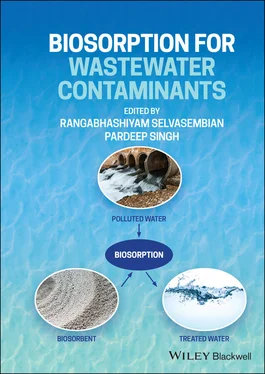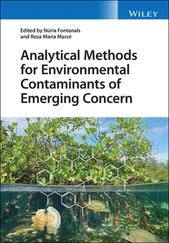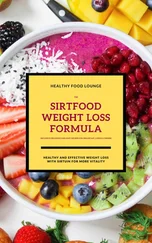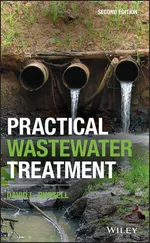In relation to oil production, especially vegetable oil, consumption has increased much more than the population. While Brazil, the United States, the Philippines, Malaysia, and Argentina are some of the biggest producers, China consumes an enormous amount of oil by importation. The most important step in vegetable oil manufacturing and the primary cause of wastewater generation is the extraction process, which can be done chemically or mechanically. When oil is extracted mechanically, the industry uses oil mills, ram presses, or screw presses to pressurize and crush plants and seeds and obtain the desired product. Chemical extraction uses solvents such as hexane (Azad, 2018).
Despite the increasing consumption of vegetable oil, the largest producer of O&G contaminants is the petroleum industry and its refineries. Since petroleum is the world’s primary energy source and will continue to be for many years, the production of wastewaters containing O&G will remain a concern. The oily wastewater comes from upstream and downstream operations with high BOD and COD derived from fatty acids. The oil and gas industry generates significant waste streams, such as water from drilling and extraction operations in oil reservoirs, and uses water in washing, cooling, and processing operations (Odeigah et al., 1997). When a refinery has vapocracking and fluid catalytic cracking units, it generates higher volumes of wastewater. So, when refining oil, there is process water and oil‐free water. The first comes from petroleum distillation, cracking, coking and viscosity reduction, and desalting, while oil‐free water includes purge water from boilers, cooling water from circuits, accidentally contaminated water, stormwater, and some smaller units (Suez, n.d.).
Another kind of pollutant is lubricating grease, deriving from petroleum oils and thickened with additives. It is used in many industries to lubricate moving machinery and other heavy equipment. As a result, friction, heat, and combustion activities may transfer metals to the grease, increasing its chemical complexity or toxicity. For instance, the combustion of heavy fuels commonly results in waste lubricants containing lead, a poisonous contaminant. From time to time, this viscous fluid needs to be replaced. Around 37 million tons of lubricants are consumed every year (Sönnichsen, 2021). Therefore, a collection system and treatment for these pollutants are necessary.
Unlike treatment processes for dye wastewater, the available methods for oily wastewater have demonstrated lower cost and complexity. There are many ways to eliminate O&G from water, including conventional, combined, and advanced technologies. According to Yu et al. (2017), conventional methods, which differ based on their separation mechanisms, are flotation, coagulation, biological treatment, and membrane filtration. On the other hand, combined technologies involve multistage processes and vary according to their studies and design. Lastly, advanced processes such as electrochemical catalysis, supercritical water oxidation, the Fenton process, ozonation, and photochemical reduction may be applied to treat wastewater containing O&G.
A biocide is a substance or mixture that contains or generates one or more active substances to destroy, deter, render harmless, prevent the action of, or exercise control over any harmful organism by any means other than mere physical or mechanical action (ECHA, 2017).
Biocides can be used in different applications such as in‐can preservatives, film preservatives, and building materials, such as coatings and wood protection products. In addition, most of these compounds have a broad spectrum of uses and application, as shown in Table 1.1(Bollmann et al., 2014).
The European Parliament and Council directive 2013/39/EU incorporated four biocidal compounds as priority substances: cybutryne and terbutryn, diuron, and isoproturon (mentioned in Table 1.1). Diuron and isoproturon belong to the phenylureas group. Isoproturon is a component used mainly for the protection of cereals. Diuron is a herbicide present in preparations used to prevent algae growth and is also used as an additive and antifouling agent (Durak et al., 2020).
Another very relevant group of biocides is the isothiazolinones. These substances can be present in cosmetics and as chemical additives for industrial use, as they have bacteriostatic and fungistatic activities or properties. However, they may represent ecotoxicological risks because they can cause irritation and allergies. This category of biocides has aroused interest in drug development due to its biological effects, resulting in an increase in patent applications related to these substances. Isothiazolinones most commonly found in commercial applications, alone or in combination, are methylisothiazolinone (MI), methyl chloroisothiazolinone (MCI), benzisothiazolinone (BIT), octylisothiazolone (OIT) and dichloroctylisothiazolinone (DCOIT) (Silva et al., 2020).
Industrial development provides greater exposure to biocides and other contaminants, which may be discharged in many environmental matrices. The occurrence of these substances in the environment is determined by environmental conditions, physicochemical properties, and anthropogenic factors (Durak et al., 2020) and has consequences in the form of acute toxicity to aquatic organisms and accumulation of toxic substances in the ecosystem, leading to decreased biodiversity and risks to human health (Mohr et al., 2008; Bollmann et al., 2014; Durak et al., 2020).
Table 1.1 Examples of biocides, activities where they are employed, and their types of products (BPD).
Source: Adapted from Bollmann et al., 2014.
| Group Compound (abbreviation) CAS number |
Activity Product types (BPD) |
| Triazines |
| Terbutryn (TB)886‐50‐0 |
AlgaecideBiocide: PT 7, 9, 10 |
| Cybutryn, Irgarol 1051 (IRG)28159‐98‐0 |
AlgaecideBiocide: PT 21 |
| Carbamates |
| Carbendazim (CD)10605‐21‐7 |
FungicideBiocide: PT 7, 9, 10 |
| Iodocarb (IPBC)55406‐53‐6 |
FungicideBiocide. PT 6, 7, 8, 9, 10, 13Cosmetics |
| Isothiazolinones |
| Methylisothiazolinone (MI)2682‐20‐4 |
Bactericide/FungicideBiocide: PT 6, 11, 12, 13Cosmetics |
| Benzisothiazolinone (BIT)2634‐33‐5 |
Bactericide/FungicideBiocide: PT 2, 6, 9, 11, 12, 13 |
| Octylisothiazolinone (OIT)26530‐20‐1 |
Bactericide/FungicideBiocide: PT 6, 7, 9, 10, 13 |
| Dichlorooctylisothiazolinone (DCOIT)64359‐81‐5 |
Bactericide/FungicideBiocide: PT 7, 8, 9, 10, 11, 21 |
| Phenylureas |
| Isoproturon (IP)34123‐59‐6 |
AlgaecideBiocide: PT 7, 10 |
| Diuron (DR)330‐54‐1 |
AlgaecideBiocide: PT 7, 10 |
| Triazoles |
| Tebuconazole (TBU)107534‐96‐3 |
FungicideBiocide: PT 7, 8, 9, 10 |
| Propiconazole (PPZ)60207‐90‐1 |
FungicideBiocide: PT 7, 8, 9 |
| Miscellaneous |
| Mecoprop (MCPP)93‐65‐2 |
AlgaecideRoof protection (not registered under BPD, since higher plants) |
BPD, Biocidal Products Directive; PT, product type.
In response to these problems, environmental agencies have made an effort to restrict and/or regulate the use and disposal of biocides. At the same time, the scientific community aims to study efficient treatment processes to remove them from wastewaters, whether domestic or industrial.
Different processes have been tested to evaluate an efficient treatment approach for industrial wastewaters. AOPs have been tried to oxidize organic compounds, which are difficult to convert into biologically less‐harmful final products (Pirilä et al., 2015). Pirilä et al. (2015) studied the photocatalysis process to treat four biocide compounds, including diuron, which is commonly used as a herbicide in agriculture, leading to contamination of the aquatic environment due to leaching from the soil. The elimination of this substance from wastewater is important due to its toxicity to photosynthetic organisms. This study revealed that diuron was removed more efficiently and with minimum energy consumption (Pirilä et al., 2015).
Читать дальше












